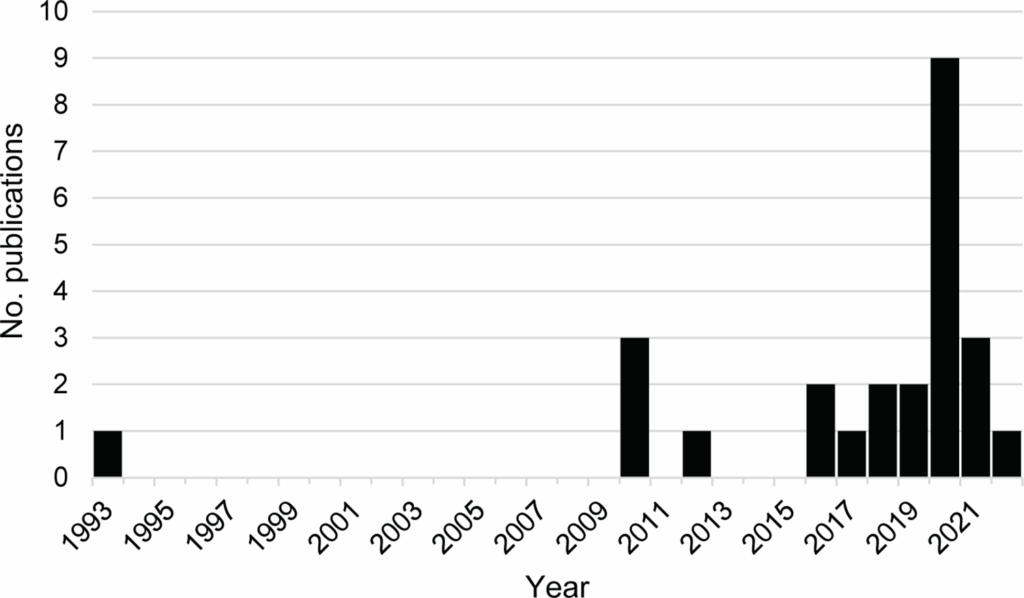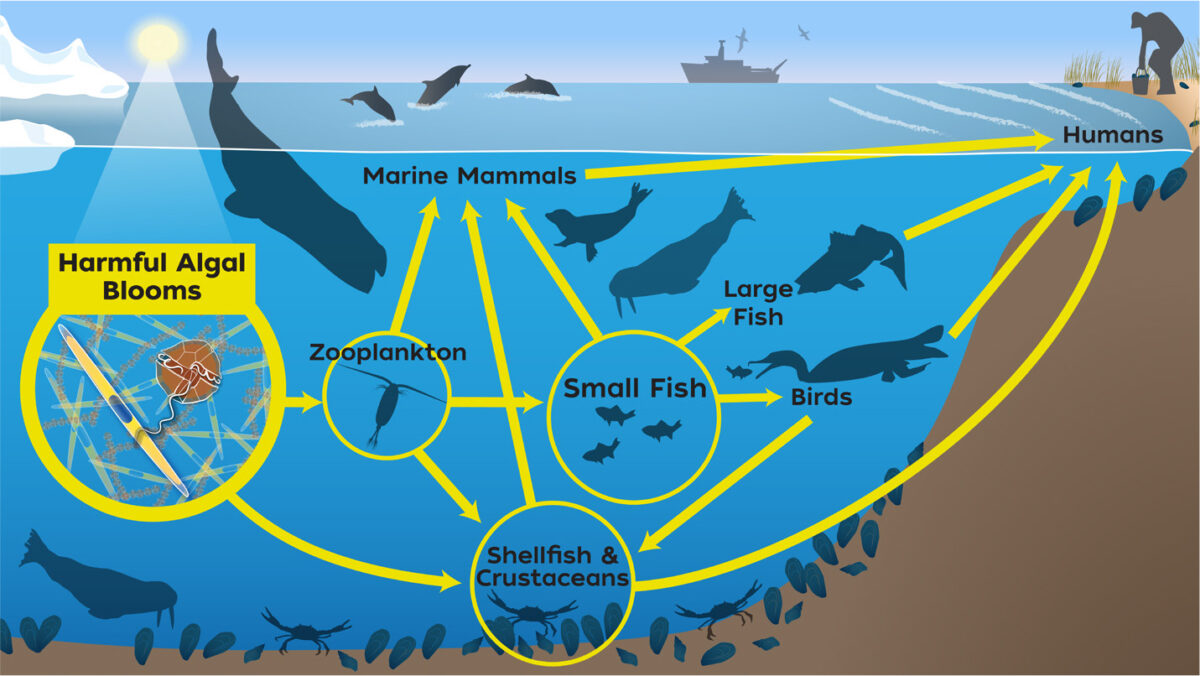HABs
Oceans, coasts, and the people who live there are more and more at risk from HABs or harmful algal blooms. HABs are toxins, such as domoic acid, that originate from specific algae such as Pseudo-nitzschia. As these toxins are projected to only increase in both intensity and frequency due to climate change, stated by Jin et al. (2024), it is necessary to implement proactive management.
Cause
Fisheries (2025), an article by NOAA explains that, Pseudo-nitzschia produces the harmful toxin domoic acid that can be found in fish and shellfish. These harmful toxins prosper under conditions consisting of warm ocean temperatures, saltier freshwater, and nutrient pollution which correlates with HAB spikes as written by Oh et al. (2023). With the increasing climate, these conditions will only continue to intensify, and Oregon is sure to see HAB breakouts in the summer.
Effect
Breakouts of HABs affect not only the fish, but the industries and the communities around them. Stated by Anderson et al. (2021), in 2005 Maine had loss revenues of 2.4 million dollars and Massachusetts had a loss revenue of 16-18 million dollars because of HABs affecting commercial fisheries. Breakouts can cause fisheries to close, and people end up losing their jobs. The effects of eating fish and shellfish that include domoic acid can leave people with nausea and sometimes even seizures.
Mitigation
To keep communities from falling ill due to marine HABs, people can monitor informational sites such as Oregon Health Authority (link down below) that give out current cyanobacteria advisories. It is also important to educate and regularly engage in conversations to keep the issue relevant to the public. As shown in figure 1, Moore et al. (2024) used publications in order to analyze the effects of humans and in doing so helps to educate others.
Link to Oregon Health Authority: Oregon Health Authority : Current Cyanobacteria Advisories : Cyanobacteria Blooms : State of Oregon

Figure 1: Publications included in the analysis of HAB effects on the well-being of Human on the US West Coast fishing communities.
Together
Coastal Oregon communities are increasingly at risk of HABs. With monitoring and community involvement, we can help limit and preserve the public health and protect fisheries from the damage that comes from these breakouts. As Henry Ford once said, “Coming together is a beginning, keeping together is progress, working together is success”.
References:
Anderson, D. M., Fensin, E., Gobler, C. J., Hoeglund, A. E., Hubbard, K. A., Kulis, D. M., Landsberg, J. H., Lefebvre, K. A., Provoost, P., Richlen, M. L., Smith, J. L., Solow, A. R., and Trainer, V. L. (2021). “Marine harmful algal blooms (habs) in the United States: History, current status and future trends.” Harmful Algae, 102, 101975.
Fisheries, N. (2025). “Effects of harmful algal blooms on West Coast fishing communities.” NOAA, <https://www.fisheries.noaa.gov/west-coast/science-data/effects-harmful-algal-blooms-west-coast-fishing-communities> (Aug. 10, 2025).
Jin, D., Kourantidou, M., Weir, M. J., and Horstmann, I. (2024). “Assessing the value of harmful algal bloom forecasts in the Pacific Northwest.” ICES Journal of Marine Science, 81(9), 1796–1816.
Oh, J.-W., Pushparaj, S. S., Muthu, M., and Gopal, J. (2023). “Review of harmful algal blooms (habs) causing marine fish kills: Toxicity and mitigation.” Plants, 12(23), 3936.
Moore, S. K., Broadwater, M., Cha, C., Dortch, Q., Harvey, C. J., Norman, K. C., Pearce, J., Pomeroy, C., and Samhouri, J. F. (2024). “Exploring the human dimensions of harmful algal blooms through a well-being framework to increase resilience in a Changing World.” PLOS Climate, 3(5).

